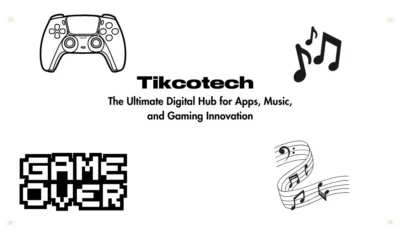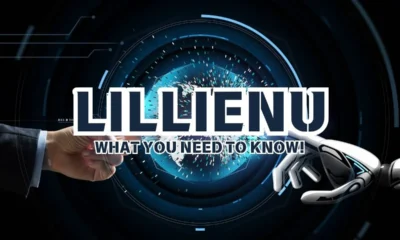AI
Project Valvrein: Revolutionizing Industries Through Digital Transformation
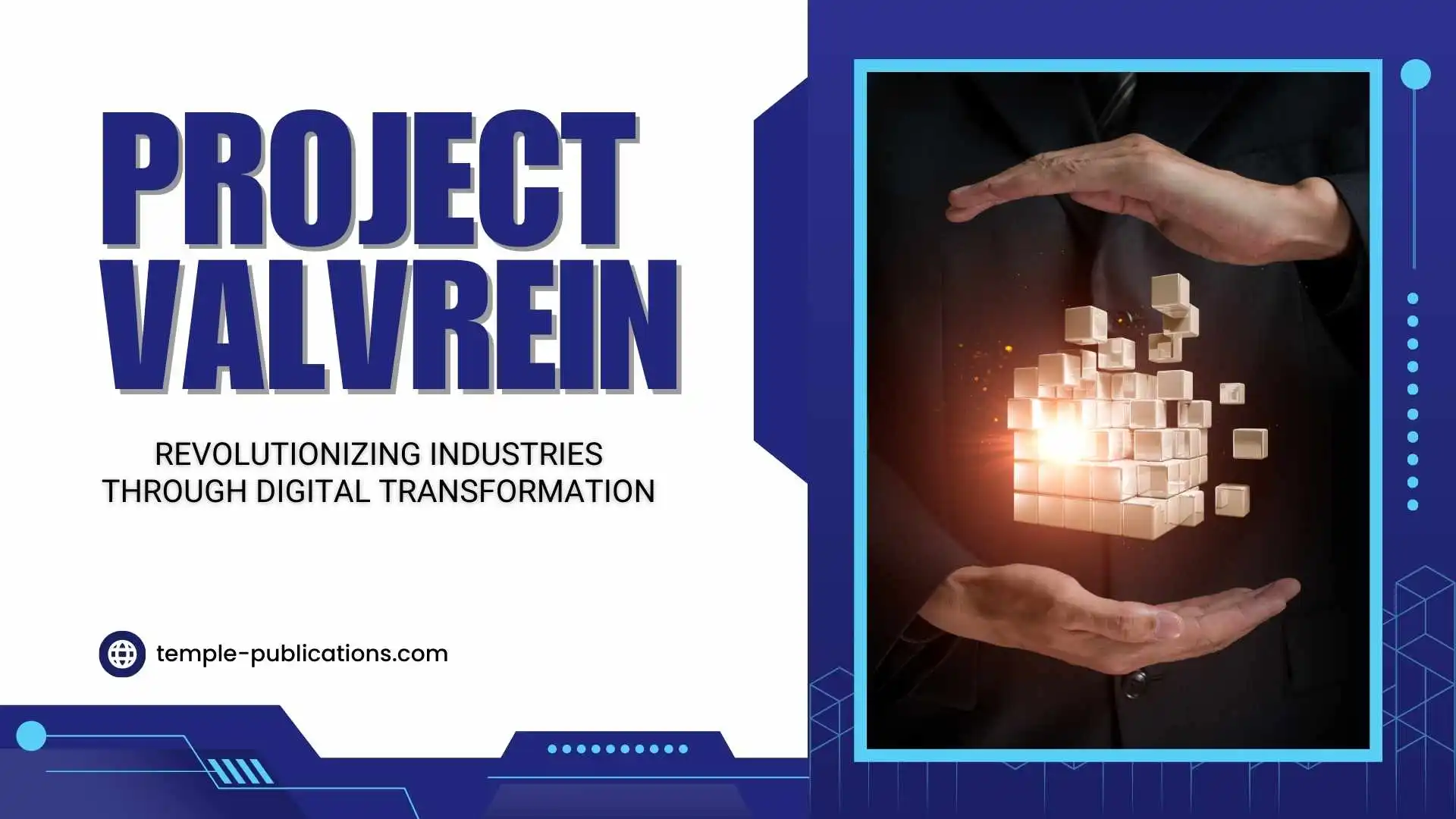
In an era characterized by increasing technological development, Project Valvrein has an opportunity to become one of the key digital business transformation projects to transform industries through the application of new technologies. This far-reaching plan is driven by promising technologies like artificial intelligence (AI), machine learning (ML), blockchain, and the IoT to assist enterprises in improving previously cumbersome processes, reducing costs, and driving new revenues. Focusing itself on such industries as healthcare, manufacturing, retail, and finance, Project Valvrein will offer solutions that would be able to fit both massive enterprises and SMEs.
Goals and Objectives of Project Valvrein
The main objective of Project Valvrein is to disrupt traditional industries through the implementation of digital processes into its value propositions. That way, the project aims to help businesses better respond to changing market needs while remaining relevant in the increasingly digital economy. To achieve the goals of Project Valvrein, three main lines involving the different levels of technological advance and obvious improvement of the detailed workflows are proposed. This streamlining is essential to organizations that are looking to realize the most from the resources available to accomplish tasks.
At the center of digital advance is the concept of efficiency. The goal of Project Valvrein is to apply solutions that optimize performance to achieve efficiency and cost reductions in different fields of operation. Despite all the existing challenges, digital transformation contributes to seeking out new sources of revenue, increasing customer loyalty, and introducing new product or service offers with truly exceptional growth potential.
Key Technologies Utilized
Artificial Intelligence
Artificial Intelligence popularly abbreviated as AI has its application in tasks, and data processing, aiming at making sound decisions. It has uses in several industries ranging from forecasting to using chatbots in customer service and for use in marketing.
Machine Learning
Machine Learning (ML) is a fundamental concept for any organization that makes use of data in decision-making. Marketers use predictive analytics in a way that makes them better able to predict market changes, stock merchandise effectively, and improve customer satisfaction. ML algorithms are variable and learn from data and therefore the results will improve as they are used.
Blockchain Technology
Blockchain technology provides secure and open trading, critical for such industries as the financial market and supply chain. It improves data quality, reduces cases of fraud, and gives stakeholders confidence in an organization by offering them an untouchable record.
Internet of Things (IoT)
The Internet of Things (IoT) enables real-time data collection through interconnected devices. In manufacturing, IoT can monitor equipment performance, predict maintenance needs, and optimize production processes. In healthcare, IoT facilitates patient monitoring and management, improving outcomes and reducing costs.
Sector-Specific Applications
Healthcare
Project Valvrein is the program, looked at to make tremendous changes in the healthcare industry and involves the adoption of telemedicine solutions as a model for remote patient monitoring and data management. The project, with emphasis on data privacy and security, seeks to enhance patient and provider trust.
Manufacturing
In the manufacturing sector, Project Valvrein introduces smart factories. Through the integration of automation and IoT, the supply chain, manufacturing process, wastes, and overall operational costs are maintained at an optimum level.
Retail
The proposed project Valvrein enriches the buyer experience by enabling organizations to deliver consumer-specific add-ons through artificial intelligence tools. Other advancements in merchandising also assist the retailers in stock holding, to avoid excessive stocking or inadequate stock as well.
Finance
In the finance sector, Project Valvrein supports digital banking innovations that streamline transactions and enhance customer experiences. It also employs advanced analytics to improve risk management and fraud detection, ensuring the security of financial transactions.
Target Audience and Beneficiaries
Large Corporations
Project Valvrein caters to large corporations by offering customized solutions that address their complex operational needs. Case studies highlight successful implementations that have led to significant improvements in efficiency and profitability.
Small Businesses
For small businesses, Project Valvrein provides scalable solutions that foster growth. By leveraging digital technologies, small enterprises can compete effectively in a digital landscape, with access to tools that were previously available only to larger organizations.
Implementation Strategy
The implementation of Project Valvrein is structured into phases:
- Initial Assessment and Planning: Identifying specific needs and setting goals.
- Development and Integration: Creating tailored solutions and integrating them into existing systems.
- Training and Support: Providing comprehensive training to ensure smooth adoption and ongoing support.
Future Trends and Innovations
Thus, Project Valvrein continues its focused work on the future development of key technology trends, such as quantum computing and advanced robotics that are expected to be crucial in digital transformation. The increased uptake of digital technologies will persistently transform industries, changing core approaches to doing business, customer experiences, and value delivery. The technological advancements in AI and ML practices will continue to provide a crucial influence on business models so that organizations can again amend their approaches and become much more customer-focused and inspire ideas. Companies that adopt these technologies will stand themselves in good stead in the future.
Conclusion
Project Valvrein depicts a marked advancement in the interactions of paradigms with various industries and the use of digital technologies. As a concept that has disrupted functions and operations, transformed productivity and efficiency, and established ways to create value and new markets, it is a guide that speaks to organizations leveraging the digital age. As organizations begin this change process, Project Valvrein exemplifies the forces of adaptability and creativity and anticipatory strategies leading to the future evolution of industries.
AI
Lillienu: AI-Powered Platform for Smarter Decision Making
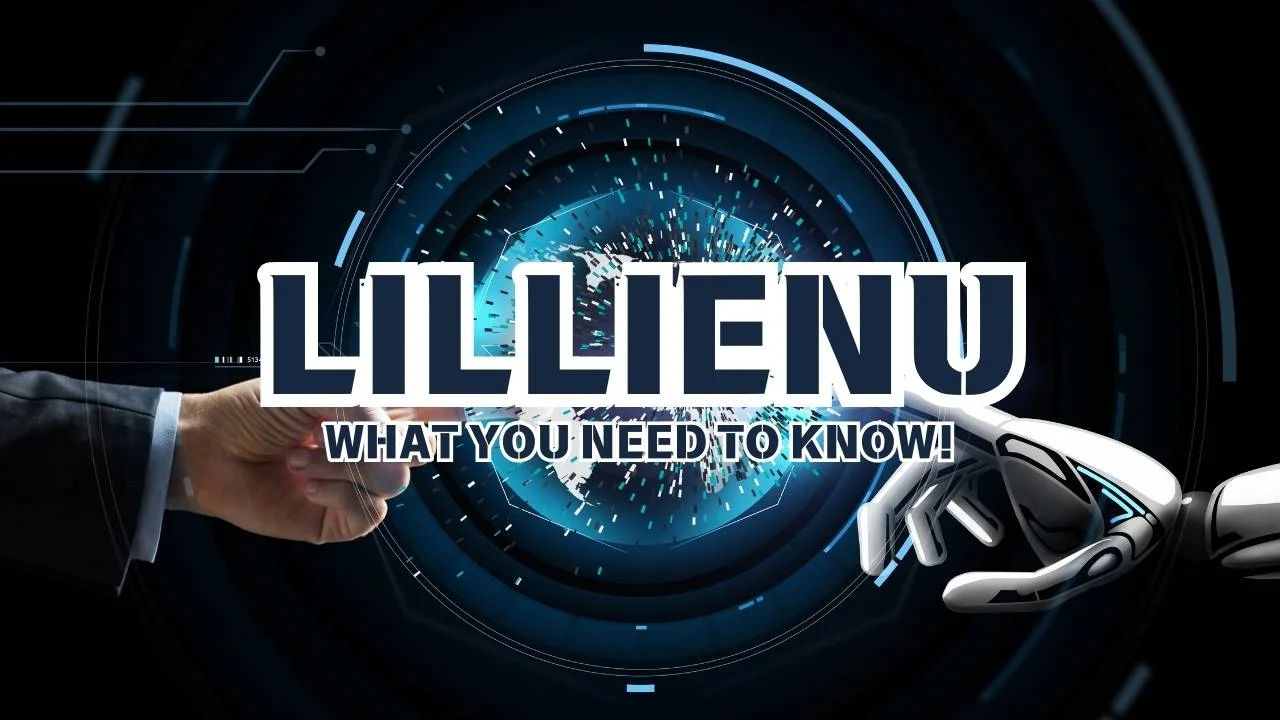
Lillienu is the most advanced AI, ML, and cloud camping platform that brings digital structures to optimality. As designed to handle maximum traffic data to analyzing nature, it help businesses to come up with accurate quick decisions. Lillienu meets current trends and increasing demand for automation and intelligent systems targeted at non-car businesses by implementing advanced algorithms and technologies needed for large business organization with large customer base. It is mainly concentrated on deriving value from the software from the users’ perspective as well as improving collaborators’ efficiency while deploying decision making processes and proper functioning. Dealing with the customer or dealing with large shipments of data, it provides solutions that enhance performance, minimize expenses, and increase accuracy of decision-making.
Understanding AI-Powered Decision Making
AI integrated decision making refers to using artificial intelligence to make decisions through analysis, pattern recognition and defining subsequent course of action. This has a positive effect on the speed and accuracy of business decision making processes that enable organizations change strategy with speed in responding to changing market conditions. This is improved on by machine learning, a sub category of artificial intelligence since it allows a system to learn from the data it has been fed, make predictions and improve on its decision making process each time. Lillienu goes a step further by including cloud since the program will have to be scalable and accessible. It further integrates these technologies to enable dynamic and data driven decisions making across industries.
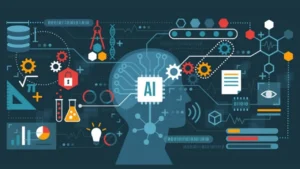
Applications of Lillienu in Various Industries
- Healthcare: Enhances diagnoses and treatment planning with advanced data analysis and AI-driven insights.
- Retail: Optimizes inventory management, demand forecasting, and customer personalization for improved sales strategies.
- Finance: Detects fraud, assesses risks, and enhances financial forecasting with accurate, data-driven tools.
- Manufacturing: Streamlines supply chains, improves production efficiency, and reduces waste through predictive analytics.
- Education: Personalizes e-learning experiences and improves institutional efficiency using AI-powered solutions.
Key Features of Lillienu
Lillienu offers a range of features that redefine digital optimization. Its advanced data processing capabilities allow organizations to handle massive datasets efficiently. Integration with existing systems ensures seamless adoption without disrupting current workflows. Real-time analytics provide insights that drive informed decisions, while automation streamlines processes, reducing manual effort. Additionally, its ability to personalize solutions makes it adaptable to various industries. By enhancing system performance through AI algorithms and leveraging cloud computing for storage and accessibility, it creates a robust platform for businesses. These features collectively make Lillienu an invaluable tool for enhancing decision-making, improving efficiency, and achieving sustainable growth.
How Lillienu Optimizes Digital Systems
Lillienu increases efficiency in the process by elimination of repetitive tasks in various digital systems. Using AI algorithms, the computer evaluates and processes data and immediately shows areas of problem and ways to fix them. Third, the cloud solutions that the platform is integrated with guarantee data storage and retrieval as well as scalability. For instance, a retail company might employ it to identify consumer’s behavior in buying patterns and manage the appropriate stock management, or possibly a health care entity may possibly improve the delivery of care through smart health status tracking. By automating routine processes and delivering insights, it improves overall system performance. It transforms digital operations, empowering organizations to focus on innovation and strategy rather than mundane tasks.
Benefits of Using Lillienu
- Increased Efficiency: Automates tasks and streamlines workflows to boost operational performance.
- Cost Reduction: Minimizes manual intervention and resource wastage, leading to significant cost savings.
- Enhanced Decision-Making: Provides accurate, data-driven insights to support informed business decisions.
- Improved User Experience: Personalizes services and delivers faster solutions for superior customer satisfaction.
- Scalability and Adaptability: Scales seamlessly with organizational growth, addressing evolving operational needs effectively.
Integration and Implementation of Lillienu
Integrating Lillienu into existing systems is seamless due to its compatibility with diverse digital platforms. The implementation process involves assessing organizational needs, customizing solutions, and deploying the platform with minimal disruption. Businesses can integrate Lillienu with CRM, ERP, and other enterprise systems to maximize efficiency. Customization options ensure that the platform aligns with unique business requirements. Once implemented, it starts analyzing workflows, identifying inefficiencies, and delivering actionable insights. Organizations also receive ongoing support for updates and system enhancements. This adaptability and ease of integration make it ideal choice for businesses looking to harness the power of AI, ML, and cloud computing.
Security and Reliability
Security and reliability is important for Lillienu. It also includes advanced encryption protocols in a way that all form of information which is sensitive cannot be accessed by anyone else apart from the user. The platform’s architectural design has also integrated AI to not only recognize but also prevent cyber threats in advance. Other tools regarding where data is backed up and recovered add to the reliability; protecting it from events that may occur. On this basis, it secures and provides relevant data storage based on cloud computing by allowing scalable access to the resources. These measures also help to pay attention to the regulations Regarding data protection and also gain the trust of the users.

Read Also: How to protect user data and user’s data privacy?
Future of AI and ML with Lillienu
Based on the current development and analysis, Lillienu is ready to spearhead the next generation of AI and ML adoption. Upcoming trends reveal enhanced promotion of intelligent technologies in the market. Through growth the company adapts to the development of technologies in the future, a factor making Lillienu relevant in future. The purpose of elaborating such platform has its desire on the automation process, scalability, and personalization, which corresponds to the increasing importance of intelligent systems. Some furtherance can be made on the use of more accurate forecasting or the gadgets, or real-time communication applications.
Conclusion
Lillienu is a relatively unseen advancement in the current age making use of artificial intelligence in decision making and digitization. When applied together as AI, ML, and cloud computing merge, it enables the business to make better decisions quicker and more accurately. It is a high value tool across industries due to it flexibility, productivity and adaptability that fosters innovation and efficiency. Used for improving the overall user experience to managing work processes, it changes the way that organizations prevail in the new world.. As businesses continue to embrace AI-driven solutions, it stands out as a pioneering platform that combines cutting-edge technology with practical applications. Embracing it means investing in the future of smarter, data-driven decision-making.
AI
From Robotic to Real: How CudekAI Makes Your AI Content Sound Authentic

In today’s content-driven world, artificial intelligence has become an essential tool for writers, bloggers, students, and marketers. Platforms like ChatGPT offer fast and efficient content generation — whether you need a blog post, product description, email, or social media caption. However, there’s one persistent issue with AI-generated text: it often lacks the natural, human touch.
That’s where CudekAI steps in. This advanced AI humanizer is designed to transform chatgpt text into human (transformar texto do chatgpt em humano) writing — improving flow, emotional tone, and readability while helping users avoid detection by AI-content checkers. If you’re using AI to generate content but want it to sound like a real person wrote it, CudekAI may be the perfect tool for your workflow.
Why AI-Generated Text Sounds Robotic
While ChatGPT and other language models are trained on vast amounts of human-written text, their output can still feel artificial. Common characteristics of robotic text include:
- Repetitive sentence structures
- Predictable word choices
- Lack of nuance or personal tone
- Overly formal or generic phrasing
- Minimal emotional depth or storytelling
AI content is functional, but often not engaging. Readers can sense when content lacks authenticity, and so can platforms like Google, Turnitin, or Originality.ai. If you want to truly connect with your audience (or avoid detection penalties), you’ll need to humanize that AI-generated content.
The Solution: CudekAI
CudekAI is a cutting-edge tool designed to transform ChatGPT text into human content with just a few clicks. It goes beyond simple paraphrasing by restructuring sentences, improving flow, and adding a more natural tone reflecting real human expression.
Whether you’re publishing blog articles, submitting academic work, or preparing marketing content, CudekAI makes your writing sound authentic, relatable, and safe from AI detection systems.
Key Features of CudekAI
✅ Natural Sentence Flow
CudekAI analyzes AI-generated content and rewrites it with a more conversational rhythm. The result is content that sounds like it came from a thoughtful human writer, not a machine.
✅ Tone and Emotion Control
You can select the tone that suits your needs — whether professional, casual, persuasive, or academic. This helps ensure your writing matches your audience and intent.
✅ Passes AI Detection Tools
Modern AI detectors scan content for statistical patterns. CudekAI rewrites your content to avoid those patterns, helping you bypass tools like GPTZero, Turnitin, and others.
✅ Language and Style Flexibility
Need to write in English, Spanish, or another language? CudekAI supports multiple languages while maintaining an authentic voice and tone.
Why Humanizing AI Text Matters
📈 SEO Performance
Search engines are now prioritizing helpful, authentic content written for users. If your blog post sounds robotic or overly optimized, it may not rank well. Humanized text improves time-on-page, reduces bounce rates, and encourages backlinks.
🎓 Academic Integrity
Students using ChatGPT for essay drafts must rewrite the content to avoid AI detection software. CudekAI enables learners to revise their work while safely keeping the original ideas intact.
💼 Brand Credibility
Whether you’re a freelancer or a company, your voice matters. Robotic content damages brand trust, while authentic writing strengthens relationships and encourages engagement.
How to Transform ChatGPT Text into Human Writing with CudekAI
- Generate a Draft with ChatGPT
Start by creating a draft using ChatGPT or any other AI writing tool. This gives you a content-rich base from which to work. - Paste into CudekAI
Copy your text and paste it into CudekAI’s platform. - Choose Your Tone
Select the tone and writing style that fits your purpose — whether you’re writing a friendly blog post, a formal report, or a casual email. - Click “Transform”
CudekAI processes your content and delivers a polished, human-like version that feels natural and reader-friendly. - Make Final Touches
Review the humanized content and add personal insights or formatting before publishing or submitting.
Real-World Applications
Bloggers & Content Creators
If you rely on AI to help with your blogging, you’ll want your content to feel engaging, not mechanical. CudekAI helps transform ChatGPT text into human stories that capture attention and build loyalty.
Students & Academics
Many students use AI tools for inspiration, but raw ChatGPT output often triggers academic detection systems. CudekAI ensures essays and research papers sound like they came from you — not a bot.
Copywriters & Marketers
Marketing copy needs to resonate. If your ad or email reads like it was written by software, your message might fall flat. CudekAI brings back emotional tone and persuasion — two keys to conversion.
SEO Professionals
To stay ahead in 2025, your content needs to meet Google’s helpful content standards. Humanized writing performs better in search, both in terms of engagement and ranking.
CudekAI vs. Basic Paraphrasers
Unlike generic paraphrasing tools, which only change a few words or swap synonyms, CudekAI rewrites for tone, structure, emotion, and authenticity. It doesn’t just help you avoid AI detection — it makes your content genuinely better.
| Feature | CudekAI | Basic Paraphraser |
| Sentence restructuring | ✅ Yes | ❌ Minimal |
| Tone adjustment | ✅ Multiple tones | ❌ None |
| AI detection evasion | ✅ High success | ❌ Low success |
| Language support | ✅ Multilingual | ⚠️ Limited |
| SEO-readiness | ✅ Optimized | ❌ Not focused |
Final Thoughts
AI writing tools are incredible — but they’re just the beginning. In 2025, the real winners in content creation are those who can blend AI efficiency with human authenticity.
With CudekAI, you can transform ChatGPT text into human writing that sounds natural, passes AI detection, and creates meaningful connections with your audience. Whether you’re writing for school, business, or the web, this tool empowers you to take control of your voice and stand out in an AI-saturated world.
AI
Cruciais: Optimizing Processing Tasks in Digital Environments
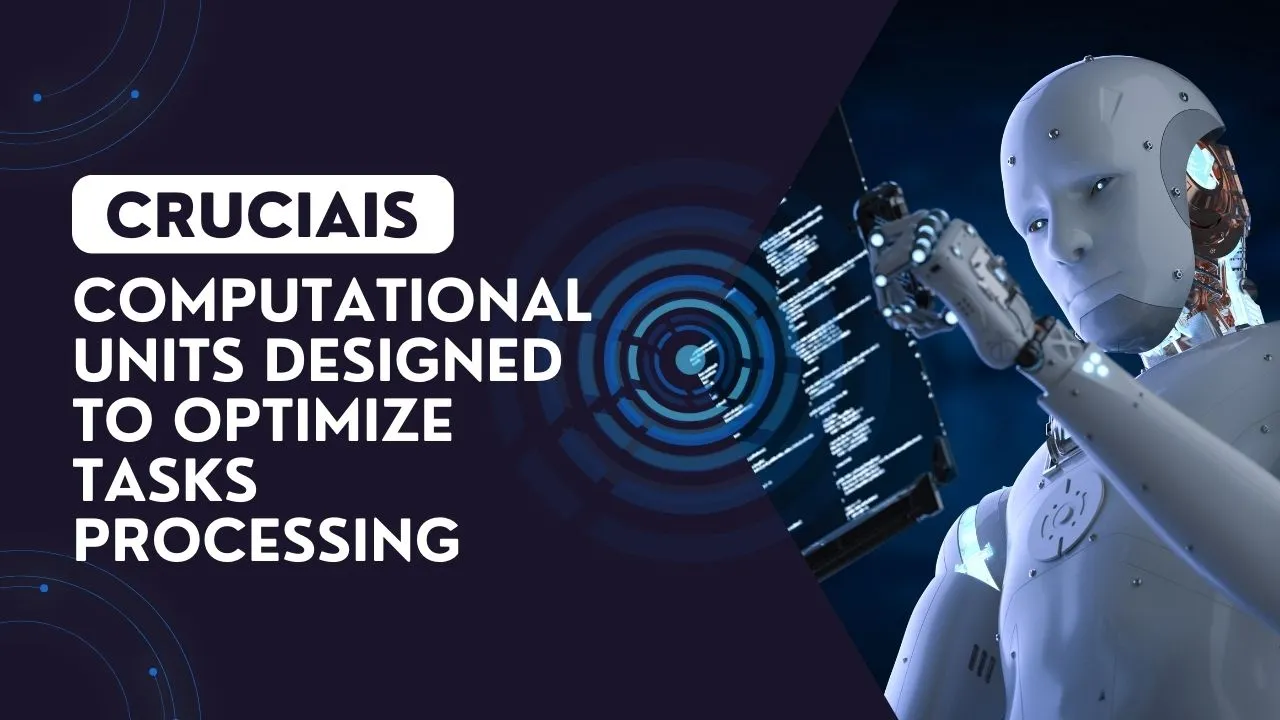
Cruciais are specialized computational units designed to enhance the efficiency of processing tasks in digital environments, especially within artificial intelligence (AI) and data-heavy contexts. The term “Cruciais” is derived from the fusion of “crucial” and “AI,” underscoring their importance in modern computing. These units are tailored to handle complex workloads that demand precision, speed, and scalability. As digital systems continue evolving, their role becomes increasingly critical for applications that require fast, intelligent decision-making, ensuring smoother operations in industries like healthcare, finance, and manufacturing.
How Cruciais Differ from Traditional Computational Units
These units are distinct from CPUs and GPUs, offering specialized capabilities. While CPUs are general-purpose processors and GPUs excel at handling parallel tasks, These units focus on specific AI and machine learning workloads. Their architecture prioritizes speed and precision, allowing them to outperform conventional processors in tasks like real-time image recognition or predictive modeling. Furthermore, they feature low-latency processing, essential for time-sensitive applications such as autonomous systems. Unlike GPUs, which require extensive power, Cruciais are designed with energy efficiency in mind, making them ideal for edge computing environments.
Applications of Cruciais in Artificial Intelligence
- Machine Learning Models: Cruciais enhances training times for deep learning models, accelerating pattern recognition and decision-making processes.
- Natural Language Processing (NLP): These units optimize language models for faster sentiment analysis, text generation, and translation.
- Computer Vision: Cruciais enables real-time image and video processing, supporting tasks like object detection and facial recognition.

Cruciais for Data Processing and Big Data Analytics
These units play a pivotal role in managing and analyzing massive datasets. Traditional processors struggle with the volume and velocity of big data, but they are engineered to handle these challenges. They support distributed computing systems, ensuring smooth performance even with real-time data streaming. Predictive analytics powered by Cruciais enables businesses to forecast trends, identify risks, and make informed decisions. Their ability to process data quickly and accurately makes them invaluable in sectors like finance, marketing, and logistics, where timely insights are critical.
Architecture and Design of Cruciais
- Core Components: Cruciais features specialized cores optimized for specific AI workloads, ensuring high performance.
- Energy Efficiency: These units integrate cooling systems and power management to minimize energy consumption and prevent overheating.
- Modularity: Cruciais are designed to scale across systems, ensuring seamless upgrades for evolving digital environments.
Cruciais in Cloud and Edge Computing
Cruciais bridge the gap between cloud and edge computing by enabling efficient processing at both ends. In cloud environments, they accelerate the training of large-scale AI models, ensuring faster deployment of services. On the edge, these units empower devices to process data locally, reducing reliance on cloud infrastructure and minimizing latency. This is especially beneficial for IoT applications, where real-time decision-making is crucial. For instance, smart cameras equipped with Cruciais can analyze footage instantly, triggering alerts without sending data to the cloud.
Challenges in Implementing Cruciais
Adopting these units in mainstream computing presents several challenges. Scalability is a primary concern, as integrating Cruciais into existing infrastructures requires careful planning. Hardware limitations, such as production bottlenecks and supply chain issues, can hinder widespread deployment. Moreover, they are still relatively expensive compared to traditional GPUs, making them less accessible for smaller organizations. Software compatibility is another hurdle, as AI frameworks need to be optimized to leverage these units effectively. Overcoming these challenges will require collaboration between hardware manufacturers, software developers, and businesses.
Comparing Cruciais with GPUs and TPUs
- Speed: These units offer higher speed for specific AI tasks compared to GPUs and TPUs.
- Specialization: While GPUs handle general-purpose tasks, they focus solely on AI workloads.
- Energy Efficiency: These units consume less power, making them ideal for edge computing.
- Cost: These units are more expensive but provide better value for highly specialized applications.
Security and Ethical Concerns
I believe that the deployment of these units poses a great security and ethical dilemma to TE. Since these units’ AI systems can be used for making decisions that often affect large numbers of people, it is crucial to maintain transparency and fairness in the resulting decision-making process. Such units could be misused to design malicious content, including deep fakes or manipulating the data generated. Measures that should be put in place include safety features such as operational security, access control, and mode of encryption, and they should be built within ethical standards. The role of policymaking and that of the developers is, therefore, to develop laws that would govern the use of these units so as to maintain the essence of innovation while discouraging the development of applications and systems that would pose a threat to the public and erode their trust.

Cruciais and Sustainability
Sustainability is a key consideration in the development of these units. These units are designed to be more energy-efficient than traditional processors, contributing to reduced carbon footprints. Their ability to process data faster also means less time spent running high-power computing systems. In industries focused on sustainability, such as renewable energy and smart agriculture, they enable optimized solutions that minimize waste and improve efficiency. As more companies adopt sustainable practices, the demand for energy-efficient units will continue to grow, further aligning technology with environmental goals.
Essentials in Academic Research and Development
Many academic institutions are engaged in research with reference to the enhancement of these units for various uses. To refine the components and discover other applications, the universites team up with the technology firms. They are also used in AI research platforms, where students and researchers can play with state-of-the-art systems. All these endeavours not only help in the growth of AI but also in the development of a global generation of computing experts. Stakeholders use conferences and journals to present their research work, guaranteeing that society continues to benefit from enhanced innovations.
Market Trends and Adoption of CriticalTechnologies
Increased awareness of this for use in various industries is opening new markets to producers quickly. These units have gained popularity with large organizations, which are the initial drivers of such innovations, although small companies and start-ups are now following suit. Experts in the global market have said that the need for this will continue to increase gradually in the future due to the development of artificial intelligence and edge computing. They are emerging as a new normal, finding applications in data centers, cloud services, and IoT meshes. As its use rises, manufacturers are now seeking to cut various costs associated with this newer technology in several industries.
Future Prospects and Innovations
The future of this is promising, with exciting innovations on the horizon. Researchers are exploring ways to make Cruciais even faster and more energy-efficient. Integration with quantum computing is expected to unlock new possibilities in AI and data processing. In the coming years, Cruciais could become a standard feature in consumer devices, enhancing everything from smartphones to smart homes. These developments indicate that they will continue to shape the future of computing, driving innovation and enabling new technological breakthroughs.
Conclusion
Cruciais represents a significant advancement in computing technology, offering specialized solutions for AI and data processing. Their ability to optimize complex tasks makes them invaluable across industries, from healthcare to manufacturing. While challenges remain, ongoing research and innovation are paving the way for broader adoption. As these units continue to evolve, they will play a pivotal role in shaping the future of digital environments, enabling smarter, faster, and more sustainable solutions.
-

 BIOGRAPHY1 month ago
BIOGRAPHY1 month agoBehind the Scenes with Sandra Orlow: An Exclusive Interview
-

 HOME7 months ago
HOME7 months agoDiscovering Insights: A Deep Dive into the //vital-mag.net blog
-

 HOME10 months ago
HOME10 months agoSifangds in Action: Real-Life Applications and Success Stories
-

 BIOGRAPHY8 months ago
BIOGRAPHY8 months agoThe Woman Behind the Comedian: Meet Andrew Santino Wife

